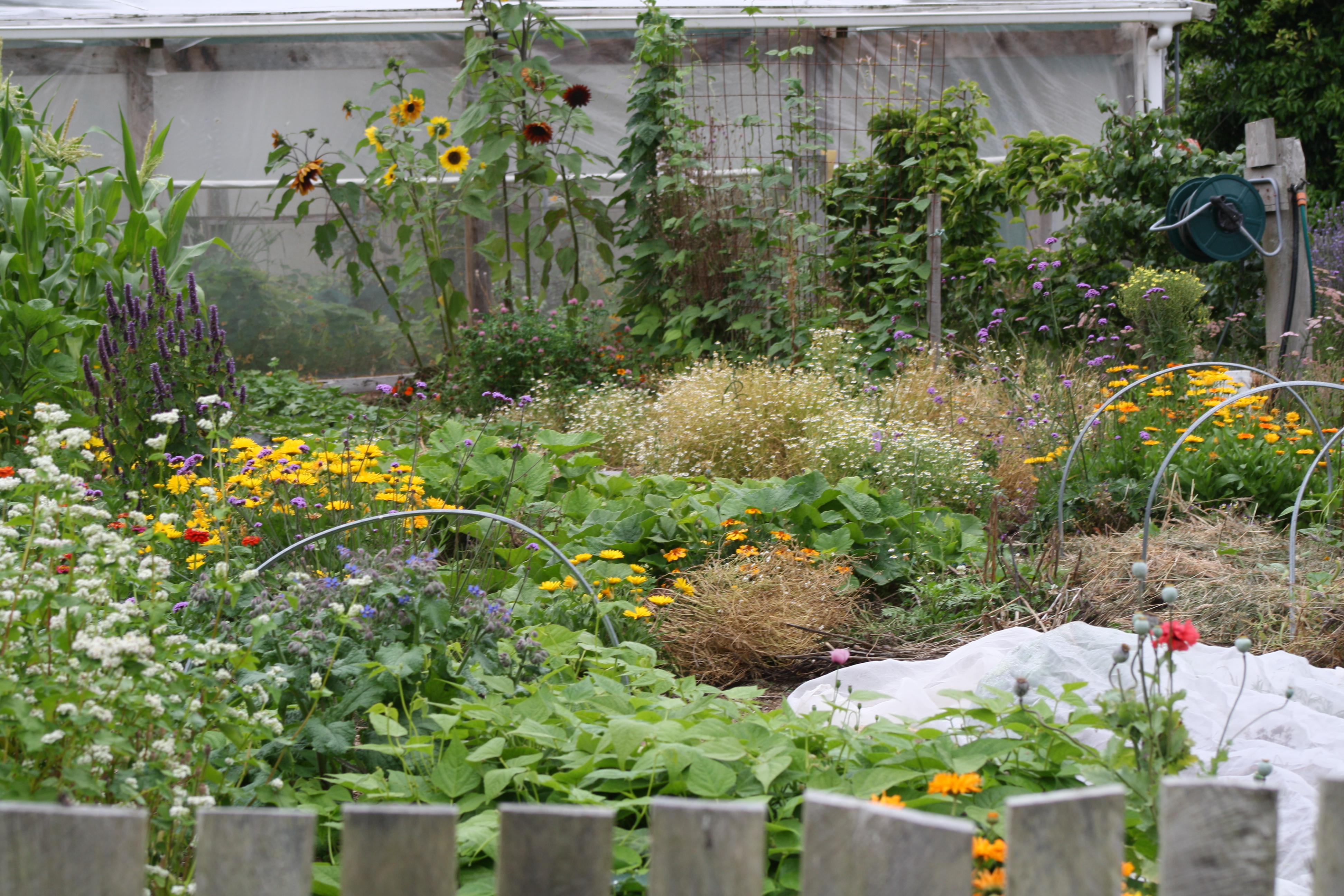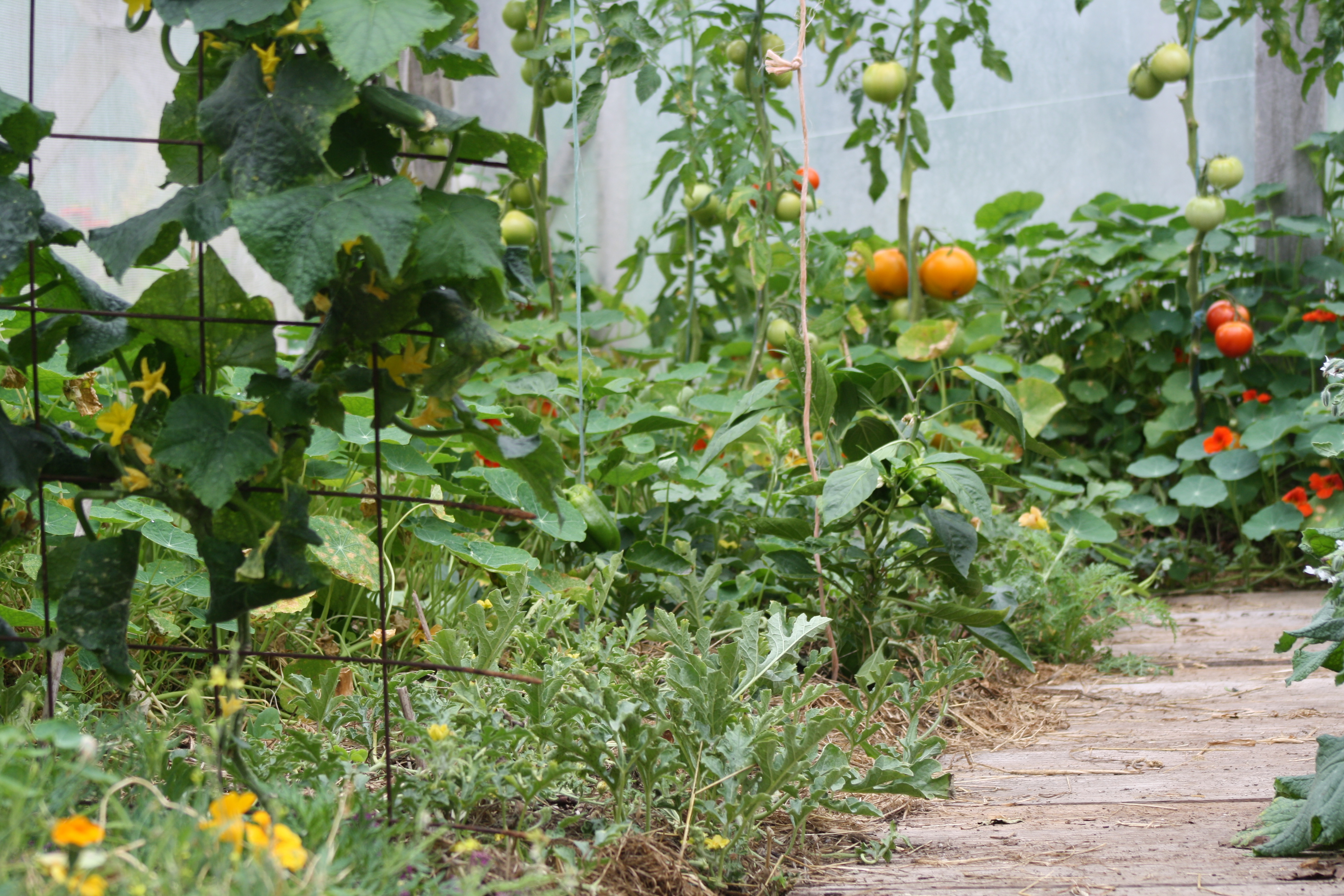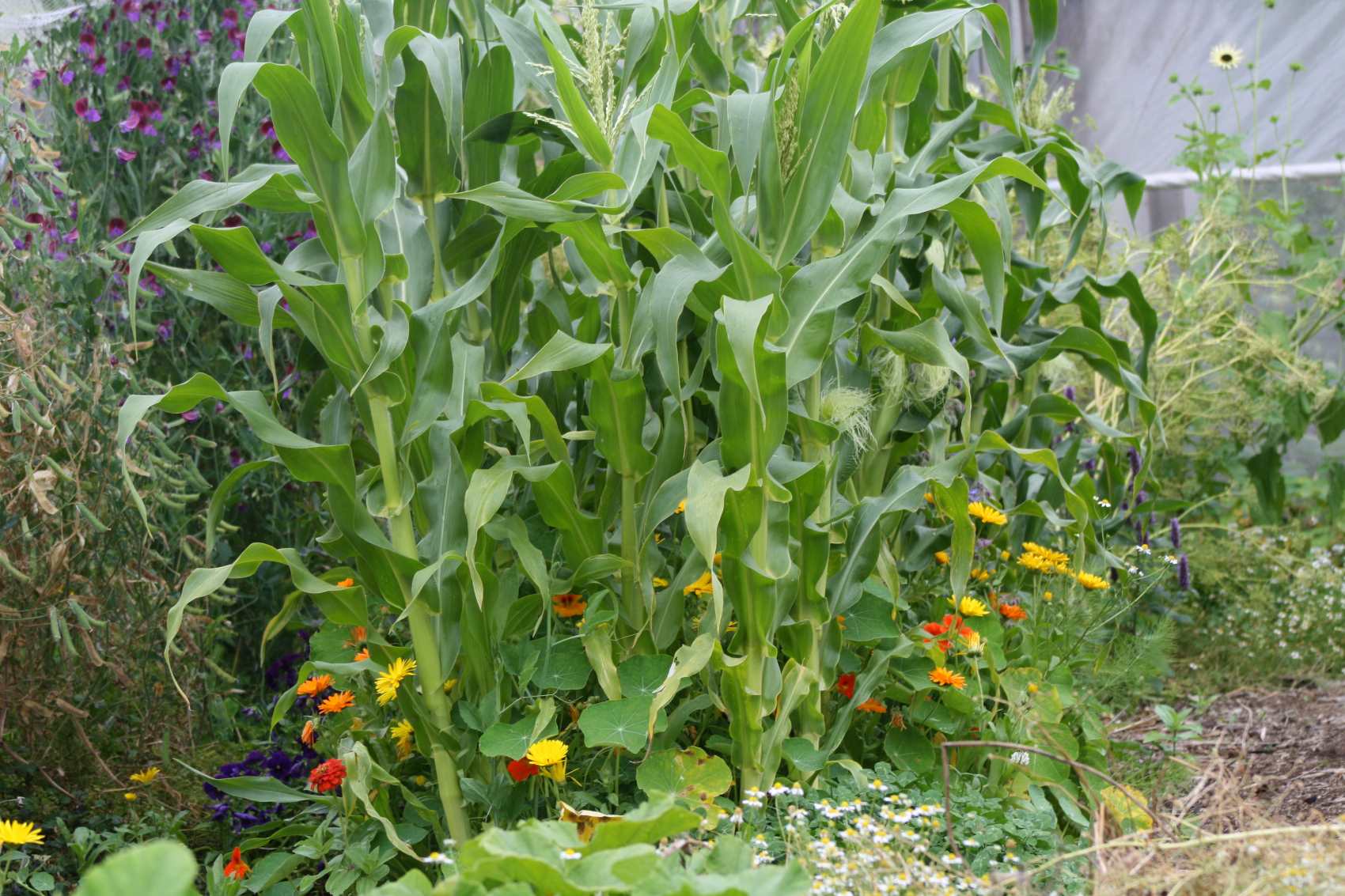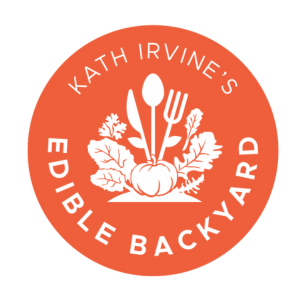3 Ways To A Living Mulch


Living mulch (covering the soil with plants), is the most nourishing mulch of all. A soil covered with plants is alive! Living on and in and around plant roots is a diversity of soil life forms - fungi, nematodes, protozoa, bacteria, arthropods and of course worms, these team up with plants and are the ultimate soil building, plant health bringing team. The more diverse the collection of roots in the soil the better.
Think prairie, meadow, forest - all are covered in a rich diversity of plants and all are self sustaining "gardens" that need no care, no fertiliser, no weeding. Lets bring all this goodness to our vegie gardens, and get as close to natural rhythms as we can for the ease it brings, its sheer brilliance and to put our best foot forward for our mother earth.
3 ways to a living mulch

Living mulch fills the gap where weeds would grow and adds layers of benefit besides - fodder for beneficial insects, material for compost piles and home grown mulch, an array of shapes and scents to confuse pests, a humming soil life, a beautiful garden + extra cropping if you use herbs or food or picking flowers.
Living mulches are any plants! Greencrops, or flowers or crops.
- Sow or plant the new crop amongst soon to be finished, older crops. This mimics the age old cycle of the young coming up under the wing of the elder - what a difference to new seedlings when they are not on their own, out in the open! I love the time efficiency here - harvesting the old crop while the new crop gets it grow on means far less downtime between the two. As the new crop grows and builds in strength, slowly chop the older crop back in order to create enough light and space. Return the chopped bits as mulch. Nourishment plus + oh so easy.
- In a similar fashion, transplant seedlings amongst established greencrops. Simply make little pockets in the greencrop, add a dollop of compost if need be and plant away. Chop and drop to let light in as the crop grows.
- Sow or plant a living mulch at the same time you sow or plant the crop. Choose fast growing groundcovers like crimson clover, phacelia or mustard or a mixture of all three. Add edibles like radish, dwarf beans, beetroot - the worlds your oyster! The key is to work it like a puzzle and choose a mixture of plants that all fit together without competing for the same niche - some upright, some low groundcover, plus nectar and pollen for benies. Include some quick crops and some slower ones. My book goes into the nitty grittys.
With practise you'll have with very little garden downtime (bare soil). Downtime = less cropping. Downtime = weeds = more work. The trick is to replace finished crops right away with a scattering of seed or new seedlings. If you are sowing and planting in a little and often way, this is a quick and easy job.
Let your favourite green crops, herbs, leafy greens and flowers go to seed and the matter of keeping a living mulch going may be in hand without you getting involved. Ha! now you're cooking with gas!
A living mulch example

Plant corn seedlings. Beneath them sow crimson clover (nitrogen fixing + bees), calendula and phacelia (soil building + bees). Plant a few squash seedlings on the sunny side of the corn, amongst the clover and phacelia seed. Plant salad greens, spinach and beetroot in little pockets along the picking edge.
This bed has it all: quick crops for a harvest soon (salads, spinach + beetroot), and slow growing, longer term crops (corn and squash). Plants for beneficial insects, nitrogen fixation + living mulch - no room for weeds and no problems with birds scratching or cat toliets. Though the bed is jammed full, all the plants have their own place. It's really no big deal to over plant - any extras can be broken off and laid back down as mulch.
Where does mulch fit in?
This isn't a case of swapping one for the other, mulch has its well earned place. Look to nature. She sheds her skin all the time, drifting it back to earth to cycle through the soil. The two work in tandem, though for best soil, lean on living mulch.
2 Good reads
https://www.ediblebackyard.co.nz/the-genius-of-living-mulch/ https://www.ediblebackyard.co.nz/introducing-guilds/
